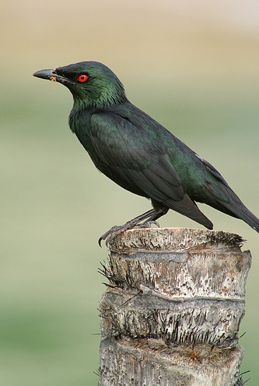The Changi boardwalk, particularly that section known as the Kelong Walk, has been attracting Asian Glossy Starling (Aplonis panayensis) and Dollarbirds (Eurystomus orientalis) to nest at the top of the nibong (Oncosperma sp.) stems used in the construction of the boardwalk.
James Wong a.k.a. Jw73 documented the adults feeding the three chicks with insects and fruits (above).
When an adult arrived with food, the chicks naturally gaped wide. The image below shows two chicks gaping widely, begging to be fed. The gape of the chick on the left shows a huge opening brightly coloured red, lined with yellow oral flanges. The colour is supposed to act as “food targets” for the parent birds. Unlike the chick on the left, that on the right has a yellow oral cavity.
Now why the difference in colour?
Experiments by Kilner & Davies (1998) using nestlings of 31 species of birds under standardised lighting conditions showed that mouth colour signaled food need only among seed-regurgitating finches. Among these species, there was a ‘red flush’ at the onset of begging. The colour became redder with increasing food deprivation.
Asian Glossy Starling regularly regurgitates seeds and as such should fall under the above finding. Thus the darker colour of the chick on the left would send a signal to the adult to feed it, rather than the sibling with a lighter oral cavity.
Note also that the juvenile has a distinctly different plumage as the adult.
Reference:
Kilner, R. & Davies, N. B. (1998). Nestling mouth colour: ecological correlates of a begging signal. Animal behaviour 56 (3):705-712.
All images by James Wong.
This post is a cooperative effort between www.naturepixels.org and BESG to bring the study of bird behaviour through photography to a wider audience.












One Response